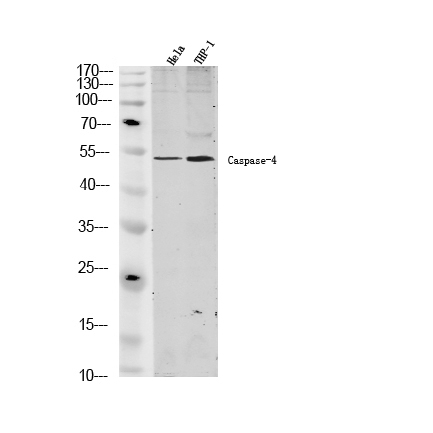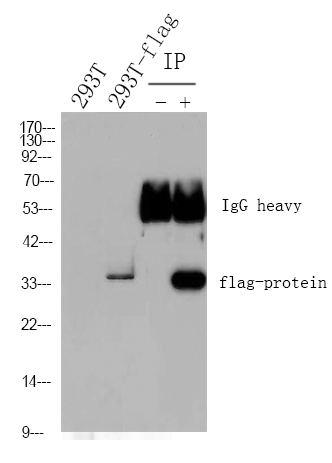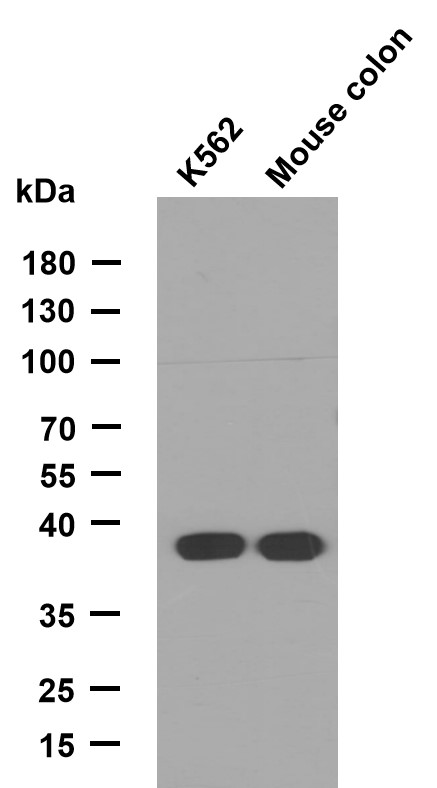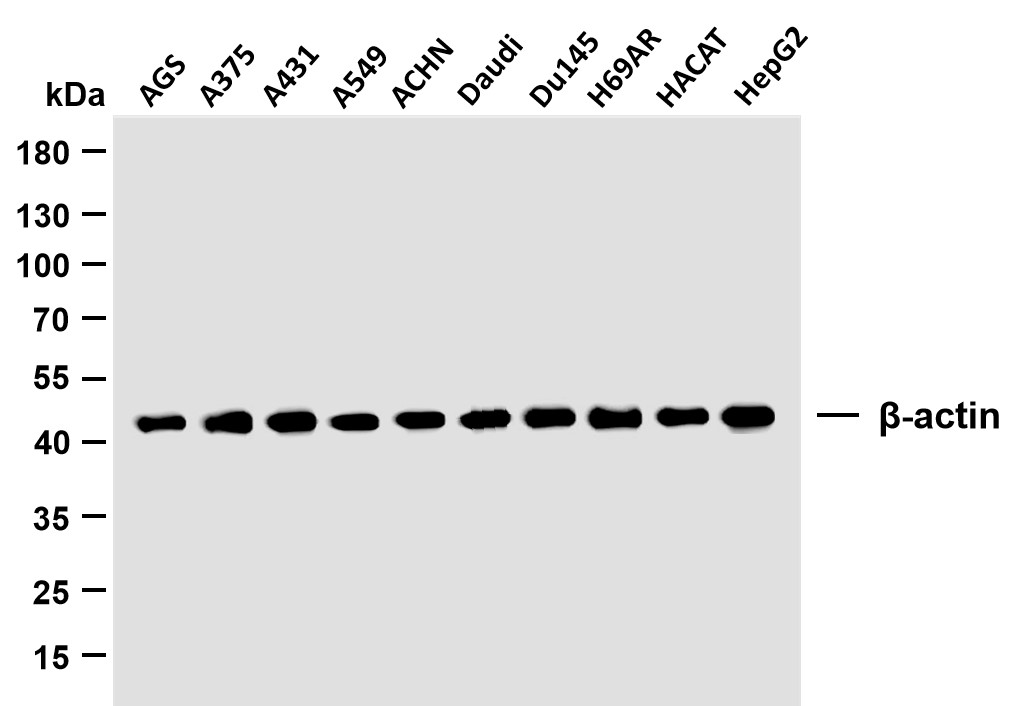Caspase-4 Polyclonal Antibody
- Catalog No.:YT0657
- Applications:WB;IHC;IF;ELISA
- Reactivity:Human
- Target:
- Caspase-4
- Fields:
- >>Neutrophil extracellular trap formation;>>NOD-like receptor signaling pathway;>>Pathogenic Escherichia coli infection;>>Shigellosis;>>Salmonella infection
- Gene Name:
- CASP4
- Protein Name:
- Caspase4
- Human Gene Id:
- 837
- Human Swiss Prot No:
- P49662
- Mouse Gene Id:
- 12363
- Mouse Swiss Prot No:
- P70343
- Immunogen:
- The antiserum was produced against synthesized peptide derived from human Caspase-4. AA range:75-124
- Specificity:
- Caspase-4 Polyclonal Antibody detects endogenous levels of Caspase-4 protein.
- Formulation:
- Liquid in PBS containing 50% glycerol, 0.5% BSA and 0.02% sodium azide.
- Source:
- Polyclonal, Rabbit,IgG
- Dilution:
- WB 1:500 - 1:2000. IHC 1:100 - 1:300. ELISA: 1:40000.. IF 1:50-200
- Purification:
- The antibody was affinity-purified from rabbit antiserum by affinity-chromatography using epitope-specific immunogen.
- Concentration:
- 1 mg/ml
- Storage Stability:
- -15°C to -25°C/1 year(Do not lower than -25°C)
- Other Name:
- CASP4;ICH2;Caspase-4;CASP-4;ICE(rel)-II;Protease ICH-2;Protease TX
- Observed Band(KD):
- 45kD
- Background:
- This gene encodes a protein that is a member of the cysteine-aspartic acid protease (caspase) family. Sequential activation of caspases plays a central role in the execution-phase of cell apoptosis. Caspases exist as inactive proenzymes composed of a prodomain and a large and small protease subunit. Activation of caspases requires proteolytic processing at conserved internal aspartic residues to generate a heterodimeric enzyme consisting of the large and small subunits. This caspase is able to cleave and activate its own precursor protein, as well as caspase 1 precursor. When overexpressed, this gene induces cell apoptosis. Alternative splicing results in transcript variants encoding distinct isoforms. [provided by RefSeq, Jul 2008],
- Function:
- catalytic activity:Strict requirement for Asp at the P1 position. It has a preferred cleavage sequence of Tyr-Val-Ala-Asp-|- but also cleaves at Asp-Glu-Val-Asp-|-.,function:Involved in the activation cascade of caspases responsible for apoptosis execution. Cleaves caspase-1.,PTM:The two subunits are derived from the precursor sequence by an autocatalytic mechanism or by cleavage by Caspase-8.,similarity:Belongs to the peptidase C14A family.,similarity:Contains 1 CARD domain.,subunit:Heterotetramer that consists of two anti-parallel arranged heterodimers, each one formed by a small and a large subunit.,tissue specificity:Widely expressed, with highest levels in spleen and lung. Moderate expression in heart and liver, low expression in skeletal muscle, kidney and testis. Not found in the brain.,
- Subcellular Location:
- Cytoplasm, cytosol . Endoplasmic reticulum membrane ; Peripheral membrane protein ; Cytoplasmic side . Mitochondrion . Inflammasome . Secreted . Predominantly localizes to the endoplasmic reticulum (ER). Association with the ER membrane requires TMEM214 (PubMed:15123740). Released in the extracellular milieu by keratinocytes following UVB irradiation (PubMed:22246630). .
- Expression:
- Widely expressed, including in keratinocytes and colonic and small intestinal epithelial cells (at protein level). Not detected in brain.
Astaxanthin Prevents Tuberculosis-Associated Inflammatory Injury by Inhibiting the Caspase 4/11-Gasdermin-Pyroptosis Pathway Evidence-based Complementary and Alternative Medicine Li Li, Zulipikaer Abudureheman, Xuemei Zhong, Liang Gao, Hui Gong, Chuanjiang He, Boyi Yang, Jie Ren, Ayiguli Alimu, Subinuer Yilamujiang, Fan Yang, Xiaoguang Zou WB Mouse MLE-12 cell
Study of the correlation between the noncanonical pathway of pyroptosis and idiopathic inflammatory myopathy. INTERNATIONAL IMMUNOPHARMACOLOGY Int Immunopharmacol. 2021 Sep;98:107810 WB Mouse 1:1000 Skeletal muscle
- June 19-2018
- WESTERN IMMUNOBLOTTING PROTOCOL
- June 19-2018
- IMMUNOHISTOCHEMISTRY-PARAFFIN PROTOCOL
- June 19-2018
- IMMUNOFLUORESCENCE PROTOCOL
- September 08-2020
- FLOW-CYTOMEYRT-PROTOCOL
- May 20-2022
- Cell-Based ELISA│解您多样本WB检测之困扰
- July 13-2018
- CELL-BASED-ELISA-PROTOCOL-FOR-ACETYL-PROTEIN
- July 13-2018
- CELL-BASED-ELISA-PROTOCOL-FOR-PHOSPHO-PROTEIN
- July 13-2018
- Antibody-FAQs
- Products Images

- Immunohistochemistry analysis of Caspase-4 antibody in paraffin-embedded human lung carcinoma tissue.

- Western blot analysis of lysates from 1) Hela ,2)THP-1, (Green) primary antibody was diluted at 1:1000, 4°over night, secondary antibody(cat:RS23920)was diluted at 1:10000, 37° 1hour.



